South Carolina's 1st congressional district
The 1st congressional district of South Carolina is a coastal congressional district in South Carolina, represented by Democrat Joe Cunningham since January 3, 2019. He succeeded Republican Mark Sanford, who was defeated by Katie Arrington in the Republican primary. Cunningham is the first Democrat to represent the district since the 1980s.
| South Carolina's 1st congressional district | |||
|---|---|---|---|
.tif.png) South Carolina's 1st congressional district since January 3, 2019 | |||
| Representative |
| ||
| Population (2000) | 668,668 | ||
| Median income | $66,337[1] | ||
| Ethnicity |
| ||
| Cook PVI | R+10 | ||
The district has historically been based in Charleston. It has included Myrtle Beach, which became a major tourist destination in the late 20th century, as well as other coastal areas that have attracted retirees and seasonal visitors. From 1993 to 2013, the district boundaries extended from Seabrook Island in the south to the North Carolina border and included parts of Charleston, Dorchester, Berkeley and Georgetown counties and all of Horry County to the North Carolina line.
In 2010, the state received another seat in Congressional apportionment due to an increase in population. The state's districts had to be redrawn, which was completed in 2013. In the final plan, the 1st congressional district was redrawn to reach from Hilton Head to mid-coast South Carolina, ending at the Santee River and comprising parts of Charleston, Berkeley, Dorchester and Beaufort counties. This configuration is similar to the one it had for most of the 20th century. Horry County was included in the new 7th congressional district.
Election results from presidential races
| Year | Office | Result |
|---|---|---|
| 2000 | President | Bush 59 - 38% |
| 2004 | President | Bush 61 - 39% |
| 2008 | President | McCain 56.1 - 42.7% |
| 2012 | President | Romney 58.3 - 40.2% |
| 2016 | President | Trump 53.5 - 40.4% |
History
Following the Civil War and granting of citizenship to former slaves, in 1870, Charleston's population was 53 percent black; and Charleston County had a 73 percent black majority.[2] The city's large population of free people of color had developed many leaders who advanced in the changing society. These population majorities protected freedmen against some of the election-related violence that occurred in other parts of the state in the 1870s as white Democrats worked to suppress black voting and regain political control of the state.[2] During Reconstruction, the mostly black Republicans from this district supported Republican candidates, including four terms for Joseph H. Rainey as US Representative to Congress, a record by an African-American legislator not surpassed until the 1950s.
After the Democrats regained control of the state in 1876, during an election season marked by violence and fraud, and Reconstruction ended in 1877, they passed laws establishing racial segregation and making voter registration and voting more difficult, such as the "eight-box law." African-American George W. Murray finally won in the disputed 1894 congressional election from this district; he challenged the Republican candidate's victory because of election fraud and was upheld by the House Committee on Elections. But passage of a new state constitution by Democrats in 1895 effectively disfranchised most African-American citizens in 1896. Their participation in the political system was ended for seven decades. The white Democrats established a one-party state and used various devices to maintain the exclusion of blacks until after passage of federal civil rights legislation in the mid-1960s.
Party realignments in the late 20th century resulted in many new black voters supporting the national Democratic Party. White conservatives in the South shifted and joined the Republican Party, in 1980 electing the first Republican congressman from the state to be elected in the 20th century. Since the buildup of the military in this region, especially the Navy, the area's white voters have supported conservative candidates.
Given the crippling of the Republican Party by the disfranchisement of blacks, a Republican was not elected to a full term in this district in the 20th century until 1980, when Tommy Hartnett was swept in by Reagan's coattails. But, his election represented a different party and was the result of a major realignment of white conservative voters in the late 20th century to the Republican, rather than the Democratic Party. Starting with national candidates in the late 1960s and 1970s, white voters in South Carolina began to shift to the Republican Party.
As after every decennial census, the state legislature conducted redistricting after the 1990 census. The white Republican-controlled legislature shifted most of Charleston's African-American majority areas into South Carolina's 6th congressional district, creating a majority-minority district. To make up for the loss of population, the 1st was extended all the way up the Atlantic coast to Myrtle Beach. The 2010 redistricting cut the district back to the southeastern corner of the state.
Since that time, the 1st congressional district has had a majority-white population. But, in 2008, with the appeal of the Barack Obama presidential campaign, Democrat Linda Ketner came within two points of winning the 1st district congressional seat. In the following off-year election of 2010, Republican Tim Scott, a conservative African American, won the seat with 65 percent of the vote.
During the 2018 South Carolina primaries on June 12, 2018, Mark Sanford lost re-nomination to the seat. The Republicans would go on to lose the seat to the Democrats after the district swung heavily to the Democrats in the 2018 midterm elections.
2013 special election
Tim Scott, a Republican from North Charleston, was elected as the 1st district's representative in 2010. He resigned after he was appointed by Governor Nikki Haley to the United States Senate when Jim DeMint resigned on January 1, 2013.
The district boundaries had been redrawn in 2011. A special election was held on May 7, 2013 to fill the vacancy created by Scott's resignation. In a Primary Election held on March 19, 2013, Elizabeth Colbert-Busch, the sister of comedian Stephen Colbert, won the Democratic nomination. Former Governor Mark Sanford, who represented the district from 1995 to 2001, and former Charleston County Councilman Curtis Eilliott Bostic faced each other in a runoff Primary for the Republican nomination on April 2, 2013. Sanford won the nomination, and defeated challengers Colbert-Busch and South Carolina Green Party candidate Eugene Platt in the special election on May 7.
List of members representing the district
| Member | Party | Years | Cong ress |
Electoral history | Location |
|---|---|---|---|---|---|
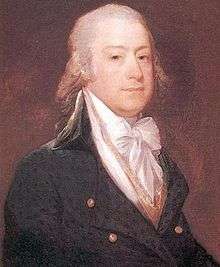 William L. Smith |
Pro-Administration | March 4, 1789 – March 3, 1795 |
1st 2nd 3rd 4th 5th |
Elected in 1788. Re-elected in 1790. Re-elected in 1793. Re-elected in 1794. Re-elected in 1796. Resigned to become U.S. Minister to Portugal. |
1789–1793 "Charleston Division" 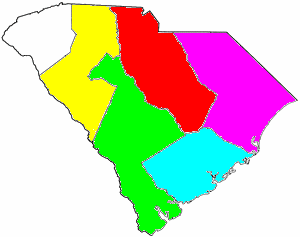 South Carolina congressional districts, 1789–1793
1st district, Charleston
2nd district, Beaufort-Orangeburg
3rd district, Georgetown-Cheraw
4th district, Camden
5th district, Ninety-Six
|
| 1793–1833 "Charleston District" | |||||
| Federalist | March 4, 1795 – July 10, 1797 | ||||
| Vacant | July 10, 1797 – November 23, 1797 | ||||
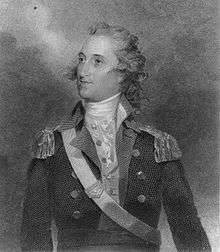 Thomas Pinckney |
Federalist | November 23, 1797 – March 3, 1801 |
5th 6th |
Elected to finish Smith's term. Re-elected in 1798. Retired. | |
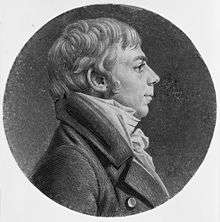 Thomas Lowndes |
Federalist | March 4, 1801 – March 3, 1805 |
7th 8th |
Elected in 1800. Re-elected in 1803. Retired. | |
| Robert Marion | Democratic-Republican | March 4, 1805 – December 4, 1810 |
9th 10th 11th |
Elected in 1804. Re-elected in 1806. Re-elected in 1808. Retired and then resigned. | |
| Vacant | December 4, 1810 – December 31, 1810 | ||||
 Langdon Cheves |
Democratic-Republican | December 31, 1810 – March 3, 1815 |
11th 12th 13th |
Elected in 1810. Later elected to finish Marion's term and seated January 24, 1811. Re-elected in 1812. Retired. | |
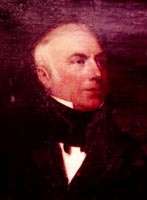 Henry Middleton |
Democratic-Republican | March 4, 1815 – March 3, 1819 |
14th 15th |
Elected in 1814. Re-elected in 1816. Retired. | |
 Charles Pinckney |
Democratic-Republican | March 4, 1819 – March 3, 1821 |
16th | Elected in 1818. Retired. | |
 Joel R. Poinsett |
Democratic-Republican | March 4, 1821 – March 3, 1823 |
17th 18th 19th |
Re-elected in 1820. Re-elected in 1823. Re-elected in 1824. Resigned to become U.S. Minister to Mexico. | |
| Jackson Democratic-Republican | March 4, 1823 – March 3, 1825 | ||||
| Jacksonian | March 4, 1825 – March 7, 1825 | ||||
| Vacant | March 7, 1825 – May 17, 1825 |
19th | |||
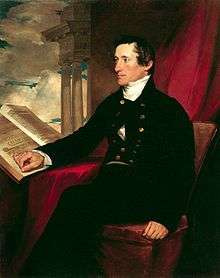 William Drayton |
Jacksonian | May 17, 1825 – March 3, 1833 |
19th 20th 21st 22nd |
Elected May 16, 1825 to finish Poinsett's term and seated December 5, 1825. Re-elected in 1826. Re-elected in 1828. [data unknown/missing] | |
| Henry L. Pinckney | Nullifier | March 4, 1833 – March 3, 1837 |
23rd 24th |
[data unknown/missing] | 1833–1843 [data unknown/missing] |
 Hugh S. Legaré |
Democratic | March 4, 1837 – March 3, 1839 |
25th | [data unknown/missing] | |
| Isaac E. Holmes | Democratic | March 4, 1839 – March 3, 1843 |
26th 27th |
[data unknown/missing] Redistricted to the 6th district. | |
| James A. Black | Democratic | March 4, 1843 – April 3, 1848 |
28th 29th 30th |
[data unknown/missing] Died. |
1843–1853 [data unknown/missing] |
| Vacant | April 3, 1848 – June 12, 1848 |
30th | |||
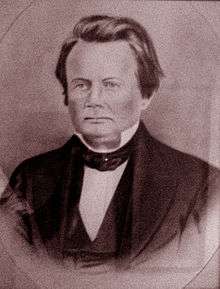 Daniel Wallace |
Democratic | June 12, 1848 – March 3, 1853 |
30th 31st 32nd |
Elected to finish Black's term. [data unknown/missing] | |
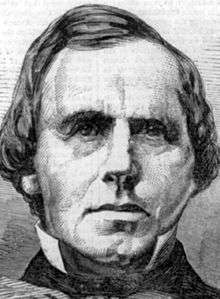 John McQueen |
Democratic | March 4, 1853 – December 21, 1860 |
33rd 34th 35th 36th |
Redistricted from the 4th district. Retired. |
1853–1863: [data unknown/missing] |
| Vacant | December 21, 1860 – July 18, 1868 |
36th 37th 38th 39th 40th |
Civil War and Reconstruction | ||
| 1863–1873: [data unknown/missing] | |||||
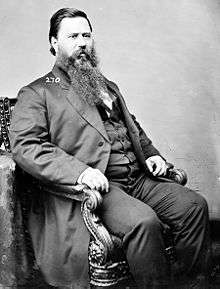 Benjamin F. Whittemore |
Republican | July 18, 1868 – February 24, 1870 |
40th 41st |
Elected to finish the short term. Also elected to the next term. Resigned. | |
| Vacant | February 24, 1870 – December 12, 1870 |
41st | |||
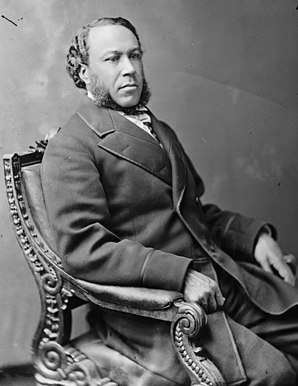 Joseph H. Rainey |
Republican | December 12, 1870 – March 3, 1879 |
41st 42nd 43rd 44th 45th |
Elected to finish Wittemore's term. Lost re-election. | |
| 1873–1883: [data unknown/missing] | |||||
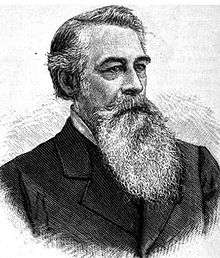 John S. Richardson |
Democratic | March 4, 1879 – March 3, 1883 |
46th 47th |
[data unknown/missing] | |
 Samuel Dibble |
Democratic | March 4, 1883 – March 3, 1891 |
48th 49th 50th 51st |
[data unknown/missing] | 1883–1893 [data unknown/missing] |
William H. Brawley |
Democratic | March 4, 1891 – February 12, 1894 |
52nd 53rd |
[data unknown/missing] Resigned to become U.S. District Judge. | |
| 1893–1903 [data unknown/missing] | |||||
| Vacant | February 12, 1894 – April 12, 1894 |
53rd | |||
| James F. Izlar | Democratic | April 12, 1894 – March 3, 1895 |
Elected to finish Brawley's term. [data unknown/missing] | ||
.jpg) William Elliott |
Democratic | March 4, 1895 – June 4, 1896 |
54th | [data unknown/missing] Lost election contest. | |
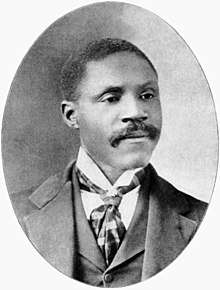 George W. Murray |
Republican | June 4, 1896 – March 3, 1897 |
Won election contest. [data unknown/missing] | ||
.jpg) William Elliott |
Democratic | March 4, 1897 – March 3, 1903 |
55th 56th 57th |
[data unknown/missing] | |
.jpg) George S. Legaré |
Democratic | March 4, 1903 – January 31, 1913 |
58th 59th 60th 61st 62nd |
[data unknown/missing] Died. |
1903–1913 [data unknown/missing] |
| Vacant | January 31, 1913 – April 29, 1913 |
62nd 63rd |
|||
| 1913–1933 Berkeley, Charleston, Clarendon, Colleton, and Dorchester Counties[3] | |||||
 Richard S. Whaley |
Democratic | April 29, 1913 – March 3, 1921 |
63rd 64th 65th 66th |
Elected to finish Legaré's term. Re-elected in 1914. Re-elected in 1916. Re-elected in 1918. [data unknown/missing] | |
| W. Turner Logan | Democratic | March 4, 1921 – March 3, 1925 |
67th 68th |
Elected in 1920. Re-elected in 1922. [data unknown/missing] | |
 Thomas S. McMillan |
Democratic | March 4, 1925 – September 29, 1939 |
69th 70th 71st 72nd 73rd 74th 75th 76th |
Elected in 1924. Re-elected in 1926. Re-elected in 1928. Re-elected in 1930. Re-elected in 1932. Re-elected in 1934. Re-elected in 1936. Re-elected in 1938. Died. | |
| 1933–1943 [data unknown/missing] | |||||
| Vacant | September 29, 1939 – November 7, 1939 |
76th | |||
 Clara Gooding McMillan |
Democratic | November 7, 1939 – January 3, 1941 |
Elected to finish her husband's term. [data unknown/missing] | ||
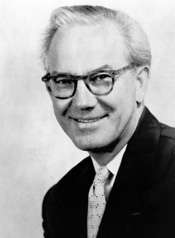 L. Mendel Rivers |
Democratic | January 3, 1941 – December 28, 1970 |
77th 78th 79th 80th 81st 82nd 83rd 84th 85th 86th 87th 88th 89th 90th 91st |
Elected in 1940. Re-elected in 1942. Re-elected in 1944. Re-elected in 1946. Re-elected in 1948. Re-elected in 1950. Re-elected in 1952. Re-elected in 1954. Re-elected in 1956. Re-elected in 1958. Re-elected in 1960. Re-elected in 1962. Re-elected in 1964. Re-elected in 1966. Re-elected in 1968. Re-elected in 1970. Died. | |
| 1943–1953 [data unknown/missing] | |||||
| 1953–1963 [data unknown/missing] | |||||
| 1963–1973 [data unknown/missing] | |||||
| Vacant | December 28, 1970 – April 27, 1971 | ||||
 Mendel Jackson Davis |
Democratic | April 27, 1971 – January 3, 1981 |
92nd 93rd 94th 95th 96th |
Elected to finish Rivers's term. Re-elected in 1972. Re-elected in 1974. Re-elected in 1976. Re-elected in 1978. Retired for health reasons. | |
| 1973–1983 [data unknown/missing] | |||||
 Thomas Hartnett |
Republican | January 3, 1981 – January 3, 1987 |
97th 98th 99th |
Elected in 1980. Re-elected in 1982. Re-elected in 1984. Retired to run for Lieutenant Governor of South Carolina. | |
| 1983–1993 [data unknown/missing] | |||||
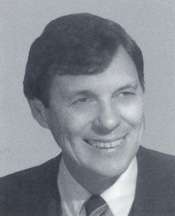 Arthur Ravenel Jr. |
Republican | January 3, 1987 – January 3, 1995 |
100th 101st 102nd 103rd |
Elected in 1986. Re-elected in 1988. Re-elected in 1990. Re-elected in 1992. Retired to run for Governor of South Carolina. | |
| 1993–1995 [data unknown/missing] | |||||
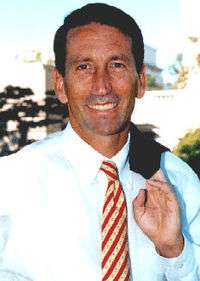 Mark Sanford |
Republican | January 3, 1995 – January 3, 2001 |
104th 105th 106th |
Elected in 1994. Re-elected in 1996. Re-elected in 1998. Re-elected in 2000. Retired to run for Governor of South Carolina. |
1995–2003 [data unknown/missing] |
 Henry Brown |
Republican | January 3, 2001 – January 3, 2011 |
107th 108th 109th 110th 111th |
Elected in 2000. Re-elected in 2002. Re-elected in 2004. Re-elected in 2006. Re-elected in 2008. Retired. | |
2003–2013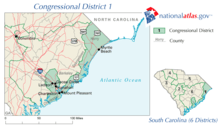 | |||||
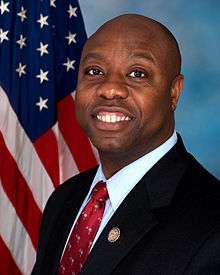 Tim Scott |
Republican | January 3, 2011 – January 2, 2013 |
112th | Elected in 2010. Re-elected in 2012, but resigned when appointed U.S. Senator. | |
| Vacant | January 2, 2013 – May 7, 2013 |
112th 113th |
|||
2013–present.tif.png) | |||||
.jpg) Mark Sanford |
Republican | May 7, 2013 – January 3, 2019 |
113th 114th 115th |
Elected to finish Scott's term. Re-elected in 2014. Re-elected in 2016. Lost renomination. | |
.jpg) Joe Cunningham |
Democratic | January 3, 2019 – present |
116th | Elected in 2018. | |
References
- https://www.census.gov/mycd/?st=45&cd=01
- Melinda Meeks Hennessy, “Racial Violence During Reconstruction: The 1876 Riots in Charleston and Cainhoy”, South Carolina Historical Magazine, Vol. 86, No. 2, (April 1985), 104-106 (subscription required)
- "South Carolina". Official congressional directory. p. 103.
- Martis, Kenneth C. (1989). The Historical Atlas of Political Parties in the United States Congress. New York: Macmillan Publishing Company.
- Martis, Kenneth C. (1982). The Historical Atlas of United States Congressional Districts. New York: Macmillan Publishing Company.
- Congressional Biographical Directory of the United States 1774–present